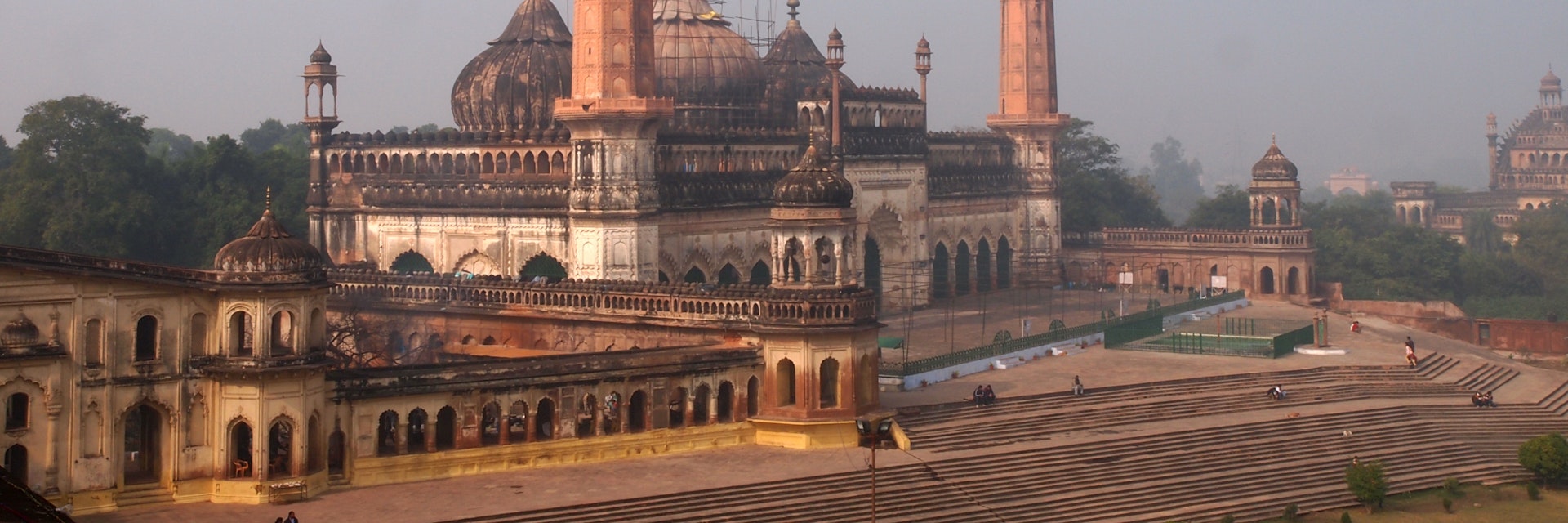This colossal imambara (Shiite tomb complex) is worth seeing in its own right, but the highly unusual labyrinth of corridors inside its upper floors make a visit here particularly special. The ticket price includes entrance to the Chota Imambara and Hussainabad Picture Gallery, both walking distance from here.
The complex is accessed through two enormous gateways that lead into a huge courtyard. On one side is the three-domed Asafri Mosque, on the other a large baoli (step-well), whose multiple levels can be explored – bring a torch (flashlight). At the far end of the courtyard is the huge central hall, one of the world’s largest vaulted galleries. Tazia (small replicas of Imam Hussain’s tomb in Karbala, Iraq) are stored inside and are paraded around during the Shiite mourning ceremony of Muharram.
But it’s what is beyond the small entrance – intriguingly marked ‘labyrinth’ – to the left of the central hall that steals the show. It leads to the Bhulbhulaiya, a disorientating network of narrow passageways that winds its way inside the upper floors of the tomb’s inner structure, eventually leading out to rooftop balconies.
Just beyond the Bara Imambara is the unusual but imposing gateway Rumi Darwaza, said to be a copy of an entrance gate in Istanbul; ‘Rumi’ (relating to Rome) is the term Muslims applied to Istanbul when it was still Byzantium, the capital of the Eastern Roman empire. The scalloped western face is the most impressive.
Across the road from the Bara Imambara is the beautiful white mosque Tila Wali Masjid, a deceptively shallow building built in 1680 and most impressive from a distance (it's often locked).
If you are visiting as part of an opposite-sex couple, you will be required to pay for a guide (₹100) to prevent any hanky-panky in the labyrinth (yes, we're serious).



